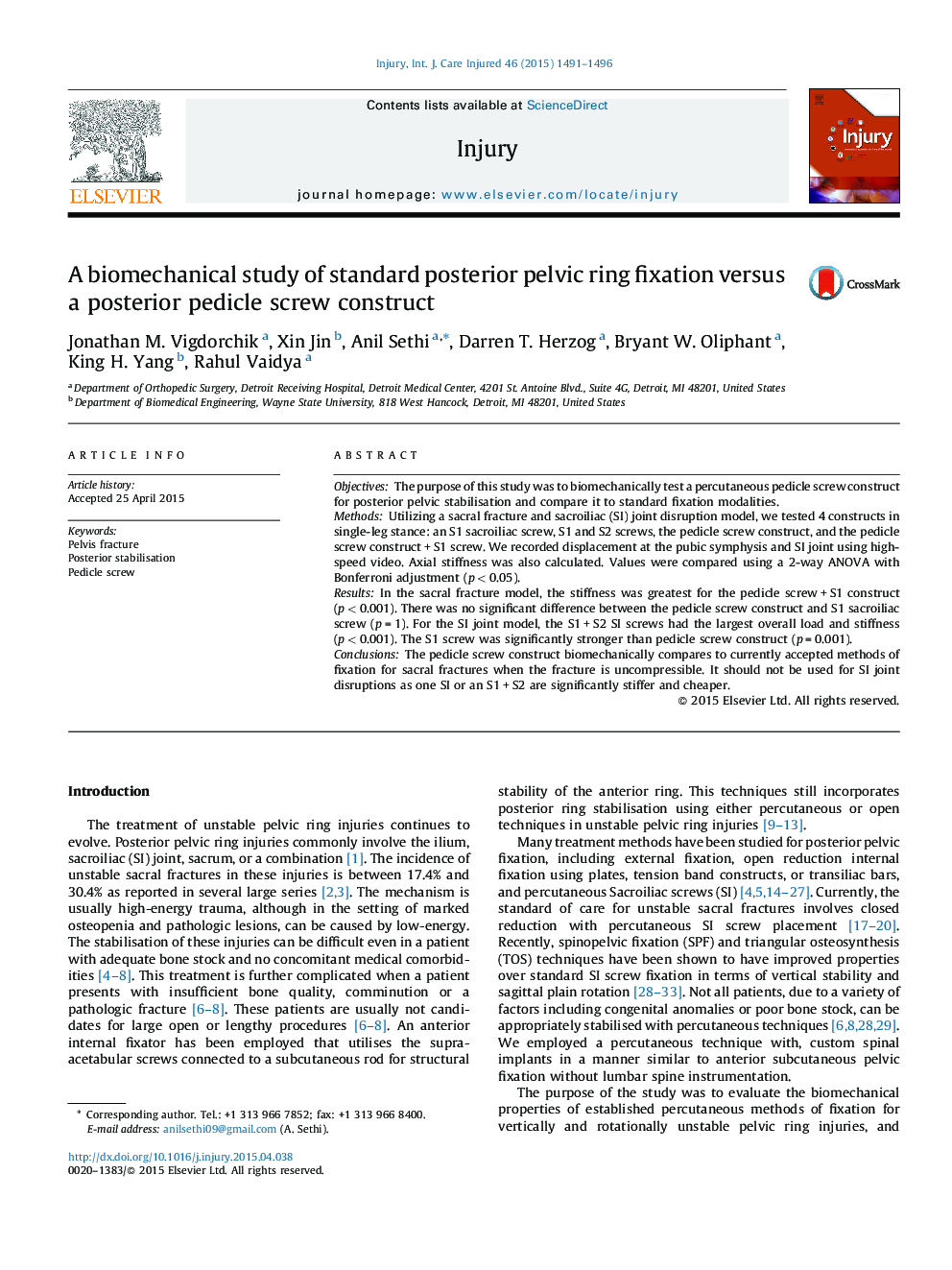| کد مقاله | کد نشریه | سال انتشار | مقاله انگلیسی | نسخه تمام متن |
|---|---|---|---|---|
| 3238886 | 1205976 | 2015 | 6 صفحه PDF | دانلود رایگان |
ObjectivesThe purpose of this study was to biomechanically test a percutaneous pedicle screw construct for posterior pelvic stabilisation and compare it to standard fixation modalities.MethodsUtilizing a sacral fracture and sacroiliac (SI) joint disruption model, we tested 4 constructs in single-leg stance: an S1 sacroiliac screw, S1 and S2 screws, the pedicle screw construct, and the pedicle screw construct + S1 screw. We recorded displacement at the pubic symphysis and SI joint using high-speed video. Axial stiffness was also calculated. Values were compared using a 2-way ANOVA with Bonferroni adjustment (p < 0.05).ResultsIn the sacral fracture model, the stiffness was greatest for the pedicle screw + S1 construct (p < 0.001). There was no significant difference between the pedicle screw construct and S1 sacroiliac screw (p = 1). For the SI joint model, the S1 + S2 SI screws had the largest overall load and stiffness (p < 0.001). The S1 screw was significantly stronger than pedicle screw construct (p = 0.001).ConclusionsThe pedicle screw construct biomechanically compares to currently accepted methods of fixation for sacral fractures when the fracture is uncompressible. It should not be used for SI joint disruptions as one SI or an S1 + S2 are significantly stiffer and cheaper.
Journal: Injury - Volume 46, Issue 8, August 2015, Pages 1491–1496
